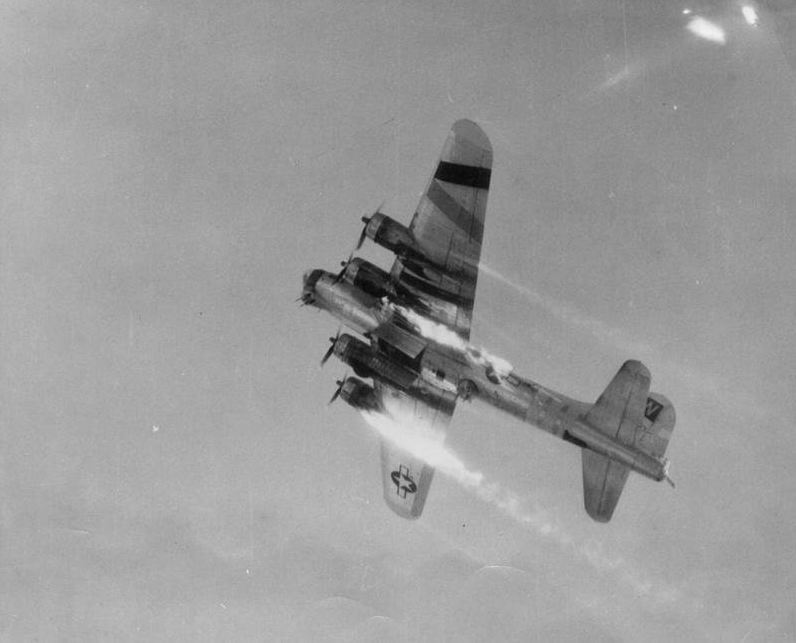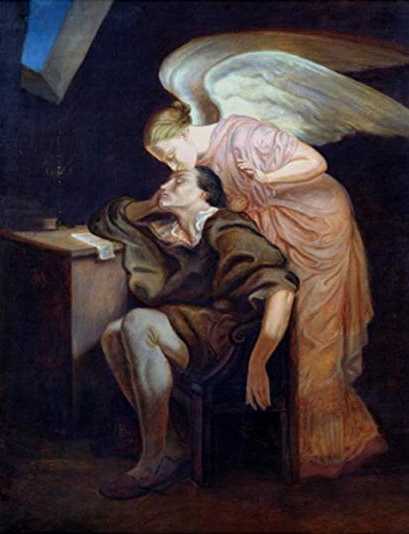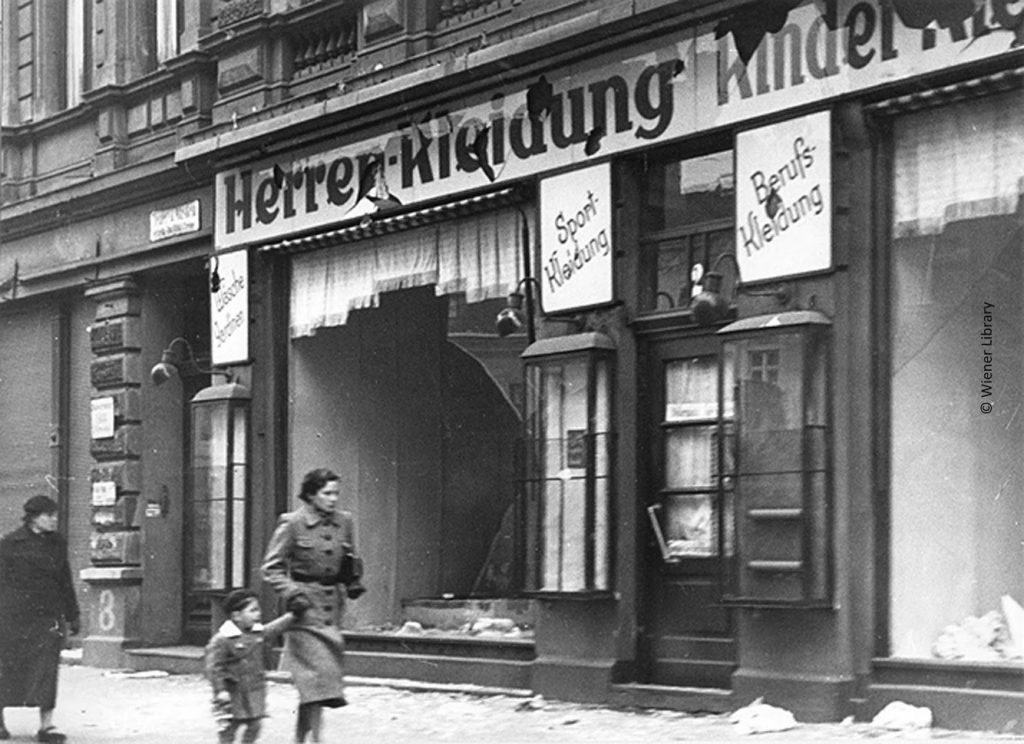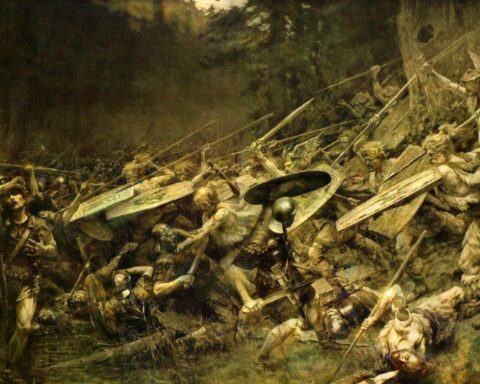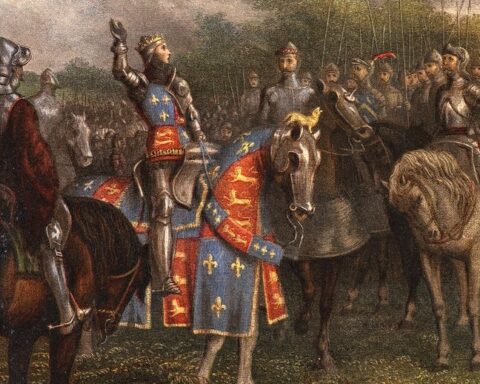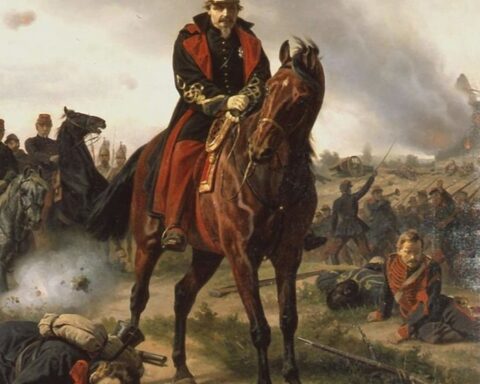Editor’s note: The following is extracted from Black Thursday, by Martin Caidin (published 1960).
“I had accepted the fact that I was not going to live through this mission. It was as simple as that. I was calm; it was a strange sort of resignation. I knew for certain that it was only a matter of seconds or minutes. It was impossible for us to survive. . . .”
Post-mission debriefing of a B- 17 pilot, October 14, 1943.
There is a terrible feeling when a bomber dies. Not just among the crewmen who, if not dead, are abandoning their machine in frantic haste before it becomes their tomb, but among those men in accompanying bombers who watch, helpless to assist, as a tongue of flame licks hungrily from a tear in a wing, feeds on fuel streaming backward, gathers strength, and throws itself through the rest of the airplane.
“These are the sights that tried our souls the most,” a pilot once explained. “To watch from your own bomber as a sister ship suffers the flame and begins to fall off in her opening death throes, to know that within her blazing heart the men are your friends and buddies, and maybe you know the pilot’s wife well, and know the kids, too.
“It involves more than the men. You don’t fly a Fortress for months and years without coming to know that gallant lady in the most intimate respects. You know her, and you place in her sturdy construction, the manner in which she flies, in everything about her, not only your life, and those of your crew, but all the life to come— if we survive this stinking war, that is.
“But one thing I’ll tell you. A Queen dies hard. She doesn’t want to go, no more than any man inside her. You may not believe this. If you don’t, it’s only because you haven’t been there, and you haven’t watched combat-hardened men cry as a ship goes down; cry as much for the machine as for the men. Because, you see, when 1o men claimed her for their own, she was no longer just a machine. She was their bomber. That made her special, and made her come alive.”
Again, select one of the 6o Flying Fortresses that went down over Europe on Mission 115. This story was pieced together over a period of time. It is authentic, and the result of the reports—after the war, when they were freed from prison camps —of the navigator and the tail gunner (their names, unfortunately, are not given in the documentary records)— the only two to survive. The story is also based on the accounts of crew men of other bombers, who watched it happen….
In the midst of the savage opening attacks one B-17 eases out of formation. The other pilots wonder at this, for there is no flame, no jagged metal showing. The heavy bomber begins a graceful slide on one wing, a lazy and gentle maneuver, but she does not stop her motion as her wing approaches dangerously near a neighboring Fortress. Frantically, the other pilot tramps hard down on his rudder, and skids crazily out of the way with barely a second to spare.
The Fortress keeps in her slide, beginning to pick up speed, and everyone stares hard at the big ship, and still not a mark shows. They are too far away to see a single bullet hole in the side of the B-17, near the cockpit. The hole testifies to a single armor-piercing bullet that entered the Fortress and without losing momentum struck the pilot in the head. Slicing in at an upward angle, the lone bullet entered the pilot’s skull just below his eyebrow. A spray of brains, tissue, bone, and blood spattered over the copilot and splashed over the controls and against the glass and the instruments. At that moment the lifeless body of the pilot slumped back.
The shock froze the copilot in the right seat. Eyes bulging, he stared in horror, his mind and senses numbed. Unfeeling, unseeing, just numb, as though all his nerve endings had been clipped with a sharp blade. He did not move, did not close his mouth within his oxygen mask, yet he began to choke, his respiration paralyzed. Now the great bomber, controls untouched, answers the tug of a shock wave and one of her wing tips drops. The B-17 slides out of formation.
This abandoning of the formation bewilders other crews who witness it. They cannot, of course, see what has happened inside the aircraft.
The navigator, feeling the slide, watching the other bombers receding, fights his way to the cockpit, afraid that either both pilots are dead or the control cables have been cut. It is the former possibility that frightens him most, for not a word comes over the interphone, despite the repeated calls of the crew.
Leaning between the two pilot seats, the navigator shouts at the copilot. It is to no avail, and the shock retains its grasp on the horror-stricken man until the navigator in desperation strikes him on the side of the face. He begins to shake off the numbness, but it is a slow process, and his mind stays frozen from what he has seen, from the brains and blood spattered on his gloves, his arms, on the control wheel. With a gasp that rattles deathlike in his throat— heard by all the crew— he draws back in revulsion.
Now the Fortress loses altitude quickly. With every passing second the heavy bomber picks up more speed; she is in the beginnings of a death dive. Frantic, the navigator reaches over the body of his dead pilot to grasp the wheel. With all the strength at his command he hauls back, a desperate struggle to bring up the nose of the bomber from its steepening descent. But this is no way to fly a heavily loaded Fortress with three tons of bombs still in the bays, with the wind screaming past the hatches from the great speed building up. It takes more than sheer strength to regain control.
The navigator is successful in his struggle and the nose of the Flying Fortress responds to the back elevator movement. She comes out of the curving dive with a brutal force, punishing the crew and the airplane alike, imparting nearly triple weight to the men. At once, with her dangerous speed and the elevators still hauled in the back position by the navigator, she lifts her nose high and begins to rush upward. The navigator has done the best he knows how, but it is far from enough.
Then she is shuddering. The nose points at the blinding sun and the effect of the pullout vanishes too quickly. The big ship hangs on the edge of a stall and buffets in warning of potential disaster. She buffets, and then she vibrates from nose to tail from the recoil of her guns. The stray is the quarry of all the fighters, and immediately the hapless Fortress with her dead pilot and frozen copilot moves into the lonely airspace away from the formations, the black-crossed fighters come whipping in to cut her to pieces and to scatter the pieces over German soil.
Facing death, the navigator does everything he can to right the airplane that hangs almost on her nose, lift nearly destroyed, the last vestiges of aerodynamic balance vanishing. He throws his weight forward on the wheel, his feet slipping in the blood still pulsing from the pilot.
But the bomber answers sluggishly. You simply don’t fly with the elevators alone; you must coordinate the ailerons and the rudder and the throttles and the trim and match everything with the demands of gravity, air resistance, angle of attack, power, and a lot more. The navigator can’t do it, it is impossible for him to force the Fortress to respond. The ship doesn’t receive the control she needs, and she ignores the hysterical mauling of the wheel by the sobbing man who struggles for balance over his dead pilot.
The nose drops, but it is not a smooth maneuver that will bring the heavy ship about. The B-17 slews to the side, wallowing in an almost helpless skid, like a man trying desperately to climb up a steep, slippery embankment when he has no hand hold and the embankment keeps shifting beneath his frantic movements. It is impossible, of course.
The German fighters see the signs, and the Focke-Wulfs rush in, eager for the kill. Their guns and cannon blaze, and within seconds the bomber is cut and slashed to ribbons, her skin and wings punctured, two engines spitting oil and smoke, and two men already hammered to the belly of the ship, lifeless. The gunners are swinging their heavy weapons about, screaming out the positions of the incoming fighters, begging the pilot to evade, to maneuver the big airplane to give them better firing positions. The Focke-Wulfs know what they have, and they do not let go. Their noses and wings sparkle brilliantly as the shells and bullets spray out in a torrent. The gunners are frightened men; not from the fighters, for these have been faced many times before. It is the yawing, sloppy motions of the airplane that speaks of slashed controls or a dead crew be hind the yokes. Yet there are the fighters, and the bomber still flies, and they are gunners. Despite the fear welling up like nausea in their throats they concentrate on the fighters, and squeeze out short, steady bursts.
The nose comes up again, but the wings are banked dangerously near the vertical. The Fortress slews around in a helpless bank, shuddering as the air burbles off the wings and lift spills away. Gasping for breath, the navigator fights helplessly against the weight of his dead pilot. He screams at the copilot wrapped in his protecting shell of shock, and then he can scream no more, because the air is too thin to begin with and he cannot gasp enough oxygen into his starving lungs. He slumps down, spots before his eyes, desperate for air. It comes without warning, a mask slapped onto his face by another crewman he never sees, never recognizes. A man has saved his life, and he doesn’t know— and never will know— who it was.
Now it is too late. The nose of the bomber keeps coming up as the wings continue to roll, and then the Fortress has had it. Caught behind the deadly effect of the raised nose, the diminished air speed, and the near-vertical bank, the big airplane seems to groan, and then she simply…quits. The lift is gone, the controls are useless, and the B-17 falls over on her back, wallowing and shuddering, the last convulsive movements before the final death plunge.
The fighters are still in there, and the navigator’s fear sweeps over him. With the world reversed and gone crazy, the terrible drumbeat of cannon shells exploding through the airplane, he rips open the pilot’s escape hatch— now at the bottom of the airplane— and squeezes through. The air blast throws him back and away from the Fortress and he falls gratefully through space, counting to ten slowly before yanking the D-Ring.
Within the dying, battered B-17 the guns fall silent as the crew feels the horror of a totally helpless airplane. In that moment of the inverted stall, as the bomber shudders again, the final gasp of warning, the tail gunner— wisely— scrambles through his escape hatch into space, following the navigator whose body has fallen free, unseen and unnoticed.
They are the only two men to leave. No sooner does the gunner fall away than the Fortress claws around in a sudden, fierce, inverted spin. She whirls crazily, spinning like a dervish as the earth rushes upward. Centrifugal force pins the men into the aircraft. In their heavy clothing, their parachutes and flak vests, the shrieking B-17 becomes their final tomb.
No one can ever say for certain, but it is likely that the frozen gaze of the copilot never left the face of the man next to him…not until that last terrible instant when the bomber met the soil of Germany, and disappeared with her eight imprisoned men in a flaming explosion.
The bombers did not often give up without a valiant struggle. With engines shot out or burning, with a wing cut to pieces, or a vertical fin and rudder ripped into tangled wreckage, with oxygen systems ablaze, with pilots smeared in their own blood and steel in their bodies, with control cables shot to ribbons and writhing like deadly snakes, still they fought to survive in the teeth of the most murderous gantlet of the skies in all our history.
And there were those bombers that could have been abandoned by pilots and other crewmen, and were not. This scene of carnage and horror is perhaps the brightest page in the history of the VIII Bomber Command: the great bombers that fell from their protecting formations with gaping tears and wounds that revealed the skeleton framework within, that careened and tumbled with gunners hanging lifelessly over their weapons, with bombs still in the racks, turning red hot with the fire of hydraulic fluid or fuel whipping violently through the bays. Bombers dying, their death assured, but not abandoned. Still with a pilot and copilot at the controls because within that battered, torn fuselage there was a badly wounded crewman who could not leave the airplane, or if this were possible, would never survive the wrenching shock of an opening parachute. Sometimes men were unconscious or their parachutes had been shot to ribbons. Whatever the reason, they could not jump.
So the pilots stayed at their controls. Sometimes they made it down, and most or all of them survived, and the injured received the medical attention to keep them alive.
More often they did not succeed. They met death together, reaching the end of their last flight as fire tore open the fuel tanks, or the earth leaped up to consume machine and men in a final terrible caress.

